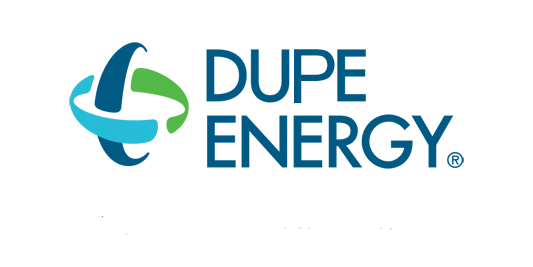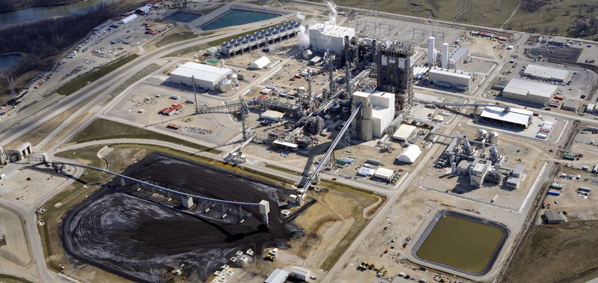August 1, 2013-by Tony Cook in the Indianapolis Star. Editors Note: Valley Watch, Inc. has been an intervener with Citizens Action Coalition, Save The Valley and Sierra Club from the very beginning of this project. In fact, we predicted fairly accurately that Duke would greatly overrun their costs and bilk Duke ratepayers out of their hard earned dollars. We recommend that people who see this article click on this link and listen to the 21 minutes of testimony delivered to the Indiana Utility Regulatory Commission in late August 2007 in which John Blair tells the Commission almost the exact scenario of what has happened over the last several years. Of course we were ignored. It is sad that the Regulators chose, instead to hop into bed with Duke and remain there to this day. Duke Energy’s controversial $3.5 billion power plant in Edwardsport broke down just six days after the utility company declared it operational, according to new regulatory filings.
Duke Energy’s controversial $3.5 billion power plant in Edwardsport broke down just six days after the utility company declared it operational, according to new regulatory filings.
In testimony filed on July 3, plant manager Jack Stultz told regulators the plant had been offline since June 12 (Duke officials said today the date was actually June 13). The plant converts coal to synthetic natural gas, which it then uses to create electricity. It’s the largest plant of its kind in the world.
Stultz attributed the shutdown to damage to fans that help vaporize waste water at the plant. Without them, Duke can’t operate the plant’s two gasifiers. He said the company was analyzing the problem and hoped to get the gasifiers online again in early July.

What will $3.3 billion buy? just a bunch of Chinese steel and experimental technology for which Dupe Energy customers were forced by the state of Indiana to assume the risk for. Pictured is the Duke Energy Edwardsport power plant which could turn out to be a very expensive “lemon.” Photo © 2012 John Blair
The multi-week shutdown took place a day after Duke provided members of the media with a tour of the new plant. During the tour, Stultz told reporters the plant was producing 480 megawatts of electricity and would ramp up to nearly 600 megawatts by the end of the day. One turbine was running on natural gas, the other on gasified coal, he said.
Duke spokeswoman Angeline Protogere said in an email Thursday morning that the plant is now back online.
“As Jack’s testimony forecasted, we returned the gasifier to service in early July and the gray water fan issues have been addressed,” she said. “We expect to deal with technical issues early in operations. As issues have arisen, they have been addressed. We’ve not found anything that will affect the long-term operations of a plant that will be (in) service for decades.”
She said Duke expects production to ramp up to full capacity over the next 15 months. The plant ran at less than 10 percent capacity in June, according to a monthly compliance report.
Consumer advocates are accusing Duke of prematurely declaring the plant operational. Doing so would allow Duke to recover any repair costs from ratepayers that they wouldn’t be able to otherwise because of a settlement reached in December that capped ratepayer liability for construction costs at about $2.6 billion, plus millions more in financing costs. The $3.5 billion plant was originally estimated to cost less than $2 billion.
Duke officials have said they consider costs incurred after the plant becomes operational to be operating costs, not construction costs.

Kerwin Olson is the Executive Director of the Citizens Action Coalition which along with Valley Watch, Save the Valley and Sierra Club has opposed this fiasco since its inception. Photo from Olson’s Facebook page
“This has nothing to do with whether the plant is operational and everything to do with Duke Energy bilking ratepayers for costs they should not be able to recover,” said Kerwin Olson of Citizens Action Coalition.
Duke’s Edwardsport plant is more than five times as expensive as a $631 million natural gas plant that Indianapolis Power & Light has proposed, and IPL plant will produce more power, said David Agnew, an attorney who represents environmental and consumer groups.
Duke, the largest electricity utility operator in the coutnry, has defended the plant, touting its environmental advantages and economic benefits for Indiana’s coal mining industry. It will generate more than 10 times the amount of electricity as Duke’s previous coal-powered plant in Edwardsport, but with 70 percent less emissions, Stultz said during the tour in June.
But that’s only true if it works.
The project — one of the most expensive in Indiana history — has been mired in controversy for years. In addition to running behind schedule and over budget, the plant has played a central role in an ethics scandal involving cozy relationships between state regulators and Duke officials. That scandal toppled the chairman of the Indiana Utility Regulatory Commission and cost three Duke officials their jobs.
In Stultz’s July 3 testimony, he provided a long list of problems that have been encountered at the plant since the beginning of the year, including cracked pipes, broken drive shafts, and failed pumps. Some of the issues have been resolved, but others remain an ongoing concern and require further analysis, Stultz said.
Consumer advocates and environmental groups say they’ve long anticipated such problems at the plant.
“There are no protections in place for ratepayers from a white elephant,” Olson said. “At what point does the commission finally do their job and cut off the tap?”
Danielle McGrath, executive director at the IURC, said she wanted to look into the issue before responding.
Charlotte, N.C.-based Duke provides electricity to about 790,000 customers in Indiana. The company has said ratepayers can expect a 14 percent to 16 percent increase in their monthly bills to pay for the cost of the construction and financing. Nine percent of that increase has already occurred. The rest will be phased in through 2015, Duke has said.
